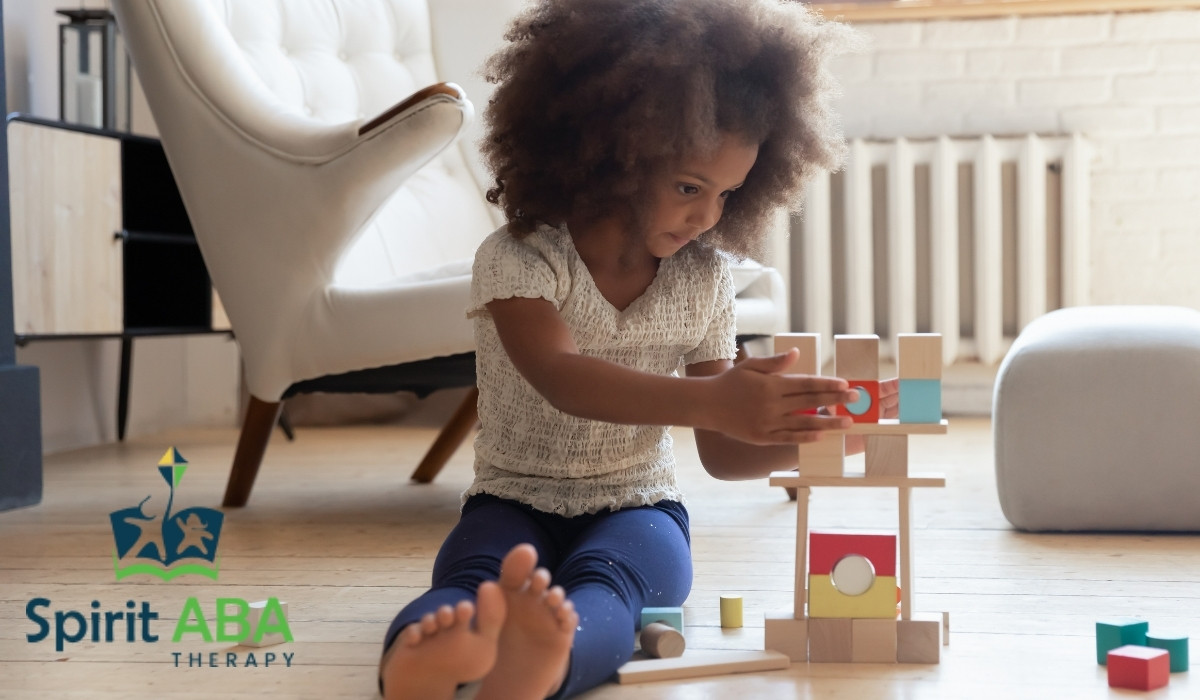Key Points:
- Play in autism may look different, but it is just as meaningful and beneficial for growth and connection.
- Understanding the types of play helps parents support social, emotional, and cognitive development.
- Parents can foster play by using strategies that match their child’s unique interests and abilities.
It’s hard to watch children play at a park and not notice the joy on their faces. But when a child with autism seems uninterested in playing like their peers, it can feel confusing or even concerning. Understanding play in autism can ease those worries and help parents nurture meaningful play experiences.
Does Play Look Different for Children With Autism?
Yes, play in autism often looks different from what many expect — and that’s okay. Children with autism may not automatically engage in pretend play, take turns easily, or join group games in the same way neurotypical children do. Instead, they might focus on lining up toys, spinning wheels, or exploring textures repetitively. These behaviors are still forms of play, and they serve important purposes.
Rather than seeing these differences as deficits, it’s helpful to recognize them as part of how the child experiences and learns about the world. Play is still crucial for children with autism because it builds communication skills, problem-solving abilities, creativity, and social connections — just in a way that fits their unique needs.
Why is Play Important for Children With Autism?
Play is much more than just “fun” — it’s a powerful way for children to grow. Even if it looks unconventional, play in autism fosters critical areas of development:
- Social skills: Learning to share, take turns, and engage with others.
- Language and communication: Practicing words, gestures, and expressions.
- Cognitive growth: Exploring cause and effect, imagination, and problem solving.
- Emotional regulation: Developing coping strategies and learning to manage feelings.
By encouraging play, parents can help their child feel more confident and connected while building foundational life skills.
What are the Different Types of Play in Autism?
Children with autism may engage in many forms of play, but they might develop differently or show preferences for certain types. Here are some of the main types of play observed in children on the spectrum:
1. Exploratory Play
This is often the first kind of play children engage in. They might touch, mouth, or shake toys to discover how they feel, sound, or look. Children with autism may stay in this stage longer, focusing on the sensory aspects of objects — for example, spinning wheels on a toy car rather than pushing it across the floor.
2. Functional Play
In this stage, children use toys the way they are intended, like stacking blocks, pushing a car, or putting a doll in a stroller. Some children with autism may skip or struggle with functional play, but others develop it when shown how through modeling and practice.
3. Constructive Play
This involves creating or building something, such as assembling a puzzle or making a tower of blocks. Many children on the spectrum enjoy this type of play because it offers structure and clear goals.
4. Symbolic or Pretend Play
Pretend play — like pretending to cook, playing house, or using a block as a phone — is often challenging for children with autism. This is because it requires imagining things that aren’t literally present and taking on roles, which can feel abstract or uncomfortable.
5. Parallel Play and Cooperative Play
Parallel play happens when children play next to each other but not directly with one another. Many children with autism prefer parallel play because it allows them to be near others without the pressure of direct interaction. Cooperative play — where children work together toward a shared goal — can emerge later with support.
How Can Parents Support Play in Autism?
Supporting play starts with meeting your child where they are. Here are some strategies that can make playtime more enjoyable and meaningful for both of you:
Follow Their Interests
Observe what your child naturally gravitates toward — whether it’s lining up cars, bouncing a ball, or feeling different textures — and build on those interests to expand their play.
Model and Guide
Show your child how to play with toys in new ways by demonstrating first. If they like spinning a wheel, for example, you can spin it and then show how the car rolls afterward.
Create a Safe and Calm Space
Children with autism may become overwhelmed easily. Set up a quiet, clutter-free area for play to help them focus and feel secure.
Encourage Turn-Taking
Even simple back-and-forth activities, like rolling a ball or stacking blocks together, teach valuable social skills.
Use Visual Supports
Pictures, schedules, and clear cues can help children understand what to do and reduce anxiety around trying new forms of play.
 What are the Benefits of Supporting Play in Autism?
What are the Benefits of Supporting Play in Autism?
By nurturing play, parents help their children grow in ways that extend far beyond the playroom. Some of the lasting benefits include:
- Improved social engagement: Children may feel more comfortable interacting with peers and adults.
- Better communication: Play offers opportunities to practice words, signs, or gestures naturally.
- Stronger problem-solving skills: Through experimenting and creating, children learn to handle challenges.
- Emotional resilience: Play can reduce stress, improve mood, and help children cope with difficult feelings.
Encouraging and supporting play also strengthens the bond between parent and child, offering moments of shared joy and understanding.
Practical Play Ideas for Children With Autism
When looking for play activities, it’s best to consider your child’s developmental level and sensory preferences. Here are some simple and effective ideas:
Sensory Play
Children with autism often enjoy activities that engage the senses. Try:
- Playing with water, sand, or rice bins.
- Using playdough, slime, or finger paints.
- Blowing bubbles or watching glitter jars.
Structured Games
Many children benefit from predictable, rule-based activities like:
- Simple board games adapted to their level.
- Building with blocks, Legos, or magnetic tiles.
- Puzzles or matching games.
Outdoor and Movement Play
Physical activity can help with regulation and motor skills. Ideas include:
- Swinging, sliding, or climbing at a playground.
- Running obstacle courses or playing catch.
- Riding scooters or bikes.
Pretend and Creative Play
If your child is open to it, introduce imaginative play slowly:
- Playing with dolls, action figures, or puppets.
- Setting up a pretend kitchen or doctor’s office.
- Storytelling with props or dress-up clothes.
If play remains very limited or your child seems frustrated or withdrawn during play, it may help to consult with professionals who specialize in supporting children with autism. Therapists, especially those trained in applied behavior analysis (ABA), can guide parents and children toward more engaging and developmentally appropriate play.
Help Your Child Thrive With Spirit ABA
If you’re looking for more ways to support your child’s development through play and beyond, Spirit ABA is here to help. Our compassionate team offers personalized ABA therapy in Colorado, Iowa, and Nebraska, helping children build the skills they need through structured, meaningful activities — including play
Play is a powerful part of learning, and our therapy programs are designed to foster growth in communication, social interaction, and independence. Together, we can help your child discover joy in play and gain confidence in their abilities.
Get in touch with us today to learn how our expert team can support your child’s journey!


